
Biography - Speakers for FluoroFest 2013 - Dallas/Fort Worth, Texas
Dr. Zygmunt (Karol) Gryczynski Ph.D., "Tex" Moncrief Jr. Chair & Professor of Physics, Dept. of Physics and Astronomy, Texas Christian University & Director, Center for Commercialization of Fluorescence Technologies (CCFT) Dept. of Molecular Biology and Immunology, UNTHSC
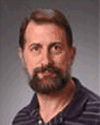 Dr. Zygmunt Gryczynski received his M.S. in experimental physics in 1982 from the University of Gdansk and Ph.D. in spectroscopy in 1987, working on the basic spectroscopic studies of isotropic and oriented systems of organic molecules. In 1991 he become a Research Assistant Professor in the Department of Biochemistry and Molecular Biology, University of Maryland and 1998-2005 he was an Assistant Director in the Center for Fluorescence Spectroscopy at the University of Maryland. From 2005 he is a Professor of Molecular Biology and Immunology at the University of North Texas Health Science Center at Fort Worth, Texas. In 2006 with the support from the Emerging Technology Funds (ETF) of Texas together with his colleagues he established a Center for Commercialization of Fluorescence Technologies (CCFT). In 2010 he became the "Tex" Moncrief Jr. Chair and Professor of Physic in the Department of Physics and Astronomy, Texas Christian University at Fort Worth.
Dr. Zygmunt Gryczynski received his M.S. in experimental physics in 1982 from the University of Gdansk and Ph.D. in spectroscopy in 1987, working on the basic spectroscopic studies of isotropic and oriented systems of organic molecules. In 1991 he become a Research Assistant Professor in the Department of Biochemistry and Molecular Biology, University of Maryland and 1998-2005 he was an Assistant Director in the Center for Fluorescence Spectroscopy at the University of Maryland. From 2005 he is a Professor of Molecular Biology and Immunology at the University of North Texas Health Science Center at Fort Worth, Texas. In 2006 with the support from the Emerging Technology Funds (ETF) of Texas together with his colleagues he established a Center for Commercialization of Fluorescence Technologies (CCFT). In 2010 he became the "Tex" Moncrief Jr. Chair and Professor of Physic in the Department of Physics and Astronomy, Texas Christian University at Fort Worth.
Professor David Birch Photophysics Group, Department of Physics, SUPA.University of Strathclyde, Glasgow, G4 0NG, Scotland
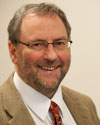 David Birch is Professor of Photophysics at the University of Strathclyde in Glasgow. He has published over 200 journal papers, mainly on fluorescence lifetime spectroscopy. His present research interests include fluorescence studies of molecular dynamics and structure down to the single molecule level, nanoparticle metrology, fibril formation and metabolic sensing. David studied physics at the University of Manchester where he obtained his PhD for research on diphenylpolyene fluorescence under the supervision of the late John B Birks. After holding a temporary lectureship at Manchester he moved into industry to work on high-resolution organic mass spectrometry with VG Micromass Ltd. He subsequently moved to Strathclyde University where he was appointed Professor of Photophysics in 1993. External appointments include in 1999 the Sir C V Raman Endowment Visiting Chair at the University of Madras, in 2000 a Visiting Professorship at Kyoto Institute of Technology and, from 2002, the Visiting Chair of Applied Physics at the Czech Technical University, Prague. Previously he has held research fellowships from the Royal Society, the Nuffield Foundation and the Japanese Society for the Promotion of Science. He is a Fellow of Scotland's National Academy, the Royal Society of Edinburgh, and a member of the Permanent Steering Committee of the Methods and Applications in Fluorescence conference series. He is Editor in Chief of the Institute of Physics journal Measurement Science and Technology and joint Editor in Chief of the new Institute of Physics journal Methods and Applications in Fluorescence. He has served on the Editorial Board of SPIE's Journal of Biomedical Optics since its launch in 1995.
David Birch is Professor of Photophysics at the University of Strathclyde in Glasgow. He has published over 200 journal papers, mainly on fluorescence lifetime spectroscopy. His present research interests include fluorescence studies of molecular dynamics and structure down to the single molecule level, nanoparticle metrology, fibril formation and metabolic sensing. David studied physics at the University of Manchester where he obtained his PhD for research on diphenylpolyene fluorescence under the supervision of the late John B Birks. After holding a temporary lectureship at Manchester he moved into industry to work on high-resolution organic mass spectrometry with VG Micromass Ltd. He subsequently moved to Strathclyde University where he was appointed Professor of Photophysics in 1993. External appointments include in 1999 the Sir C V Raman Endowment Visiting Chair at the University of Madras, in 2000 a Visiting Professorship at Kyoto Institute of Technology and, from 2002, the Visiting Chair of Applied Physics at the Czech Technical University, Prague. Previously he has held research fellowships from the Royal Society, the Nuffield Foundation and the Japanese Society for the Promotion of Science. He is a Fellow of Scotland's National Academy, the Royal Society of Edinburgh, and a member of the Permanent Steering Committee of the Methods and Applications in Fluorescence conference series. He is Editor in Chief of the Institute of Physics journal Measurement Science and Technology and joint Editor in Chief of the new Institute of Physics journal Methods and Applications in Fluorescence. He has served on the Editorial Board of SPIE's Journal of Biomedical Optics since its launch in 1995.
Ignacy Gryczynski Ph.D., University of North Texas, Cell Biology
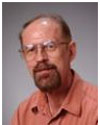 Fluorescence spectroscopy and microscopy progressed recently towards a nanotechnology. The technological advances in optics, computers, surface science and engineering made possible single molecule detection and overcome the diffraction limit. Dr. Gryczynski's research focuses on fluorescence enhancements near metallic surfaces and particles. The enhanced fluorescence is being applied to sensing devices and bioassays. He also has a joint appointment in the Department of Molecular Biology and Immunology, where he co-manages the time-resolved fluorescence laboratory. This laboratory carries basic spectroscopy research and is open to the needs of researchers from both departments.
Fluorescence spectroscopy and microscopy progressed recently towards a nanotechnology. The technological advances in optics, computers, surface science and engineering made possible single molecule detection and overcome the diffraction limit. Dr. Gryczynski's research focuses on fluorescence enhancements near metallic surfaces and particles. The enhanced fluorescence is being applied to sensing devices and bioassays. He also has a joint appointment in the Department of Molecular Biology and Immunology, where he co-manages the time-resolved fluorescence laboratory. This laboratory carries basic spectroscopy research and is open to the needs of researchers from both departments.
Steve Vogel Ph.D., NIH, Neuroscience
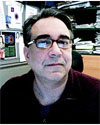 Dr. Vogel received his B.S. from the City College of New York in 1978 and his Ph.D. from Columbia University in 1989, where he studied G-proteins in the nervous systems of Aplysia and squid with Jimmy Schwartz. During a postdoctoral fellowship with Josh Zimmerberg at NIDDK and NICHD, he investigated the calcium dependence of exocytosis in sea urchin eggs and discovered heterogeneity for calcium responses in a population of secretory vesicles. Dr. Vogel next became an assistant and subsequently a tenured associate professor at the Medical College of Georgia (1997-2003), where he studied the mechanism of exocytosis - endocytosis coupling. He joined NIAAA as an investigator in 2003. His laboratory develops new microscope-based assays using FRET imaging, fluorescence polarization, and fluorescence correlation spectroscopy to study protein-protein interactions in living cells, focusing on the structure and function of CaMKII holoenzyme.
Dr. Vogel received his B.S. from the City College of New York in 1978 and his Ph.D. from Columbia University in 1989, where he studied G-proteins in the nervous systems of Aplysia and squid with Jimmy Schwartz. During a postdoctoral fellowship with Josh Zimmerberg at NIDDK and NICHD, he investigated the calcium dependence of exocytosis in sea urchin eggs and discovered heterogeneity for calcium responses in a population of secretory vesicles. Dr. Vogel next became an assistant and subsequently a tenured associate professor at the Medical College of Georgia (1997-2003), where he studied the mechanism of exocytosis - endocytosis coupling. He joined NIAAA as an investigator in 2003. His laboratory develops new microscope-based assays using FRET imaging, fluorescence polarization, and fluorescence correlation spectroscopy to study protein-protein interactions in living cells, focusing on the structure and function of CaMKII holoenzyme.
Gerard Coté Ph.D., Texas A&M, Biomedical Engineering
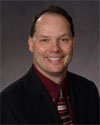 Dr. Gerard L. Coté is Head of the Department of Biomedical Engineering and holds the Charles H. and Bettye Barclay Professorship in Engineering at Texas A&M University. His primary research interests include the use of optics for medical diagnostics and biomedical sensing.
Dr. Gerard L. Coté is Head of the Department of Biomedical Engineering and holds the Charles H. and Bettye Barclay Professorship in Engineering at Texas A&M University. His primary research interests include the use of optics for medical diagnostics and biomedical sensing.
Dr. Coté directs the Optical Biosensing Laboratory. Individuals within the lab focus on the design, development, theoretical modeling and analysis of optical sensors for biomedical measurements.
In particular, the group within this lab and collaborators develop macro-scale to nano-scale biomedical systems and point-of-care devices using lasers, optics and electronics. Some research applications include development of innovative, noninvasive and minimally invasive ways to test blood sugar levels in diabetes; to detect other body chemicals such as cardiac biomarkers for cardiovascular disease or blood toxins such as PCBs or BPA; and to monitor perfusion and oxygenation for tissue implants.
The research within the laboratory is multidisciplinary and involves several investigators from across the world including medical doctors, life science faculty, faculty from other engineering disciplines, national laboratory staff and industry personnel.
Kayla Green Ph.D., TCU, Bioinorganic Engineering
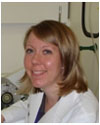 Kayla N. Green received her B.S. degree from Tarleton State University in 2003. In 2007, she obtained her Ph.D. in Inorganic Chemistry from Texas A&M University under the direction of Marcetta Y. Darensbourg where she studied immobilized biomimetic complexes of metalloenzymes such as Acetyl CoA Synthase. While there she was honored with the U.S. Senator Phil Gramm Doctoral Fellowship Award (2007) and a Chemistry Biology Interface - NIH Training Grant (2004). In 2008 she began her postdoctoral work at UT Southwestern Medical Center, Advanced Imaging Research Center for A. Dean Sherry. Her research focused on the synthesis of lanthanide complexes for molecular imaging using novel NMR techniques and the development of computational methods for the evaluation of these complexes. Kayla joined the faculty at TCU in the Fall of 2010.
Kayla N. Green received her B.S. degree from Tarleton State University in 2003. In 2007, she obtained her Ph.D. in Inorganic Chemistry from Texas A&M University under the direction of Marcetta Y. Darensbourg where she studied immobilized biomimetic complexes of metalloenzymes such as Acetyl CoA Synthase. While there she was honored with the U.S. Senator Phil Gramm Doctoral Fellowship Award (2007) and a Chemistry Biology Interface - NIH Training Grant (2004). In 2008 she began her postdoctoral work at UT Southwestern Medical Center, Advanced Imaging Research Center for A. Dean Sherry. Her research focused on the synthesis of lanthanide complexes for molecular imaging using novel NMR techniques and the development of computational methods for the evaluation of these complexes. Kayla joined the faculty at TCU in the Fall of 2010.
Marinella Sandros Ph.D., University of North Carolina Greensboro, Nanoscience
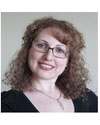 Prof. Sandros research concentration is focused on the integration of inorganic nanomaterials and polymers with biology. She has previously designed a reagentless protein-based nanobiosensor for selective small molecules detection using conformational dependent interactions between a redox active metal complex ion RuII and the surface of a CdSe nanoparticle. Prof Sandros was able to enhance the biointerface properties of InGaP@ZnS quantum dots by encapsulating them in chitosan. Along with her collaborators, she has developed a robust and stable multifunctional siRNA delivery system and amplified Surface Plasmon Resonance Imaging (SPRi) signals using nanoparticles.
Prof. Sandros research concentration is focused on the integration of inorganic nanomaterials and polymers with biology. She has previously designed a reagentless protein-based nanobiosensor for selective small molecules detection using conformational dependent interactions between a redox active metal complex ion RuII and the surface of a CdSe nanoparticle. Prof Sandros was able to enhance the biointerface properties of InGaP@ZnS quantum dots by encapsulating them in chitosan. Along with her collaborators, she has developed a robust and stable multifunctional siRNA delivery system and amplified Surface Plasmon Resonance Imaging (SPRi) signals using nanoparticles.
Paul Pantano Ph.D., University of Texas, Dallas, Bioanalytical Chemistry, Bionanotechnology
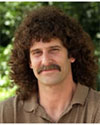 Our work involves elucidating the intracellular response and fate of carbon nanomaterials (e.g., carbon nanotubes and graphene oxide), and advancing the diagnostic and therapeutic applications of carbon nanomaterials. Our areas of expertise include the characterization of carbon nanomaterials, the reproducible preparation of purified nanomaterial samples, and the development of direct and label-free measurements of nanomaterials inside living cells and tissue.
Our work involves elucidating the intracellular response and fate of carbon nanomaterials (e.g., carbon nanotubes and graphene oxide), and advancing the diagnostic and therapeutic applications of carbon nanomaterials. Our areas of expertise include the characterization of carbon nanomaterials, the reproducible preparation of purified nanomaterial samples, and the development of direct and label-free measurements of nanomaterials inside living cells and tissue.
Francis D'Souza Ph.D., University of North Texas, Chemistry
Dr. Francis D'Souza is a Professor of Chemistry and Materials Science and Engineering. He is part of UNT's BioNanoPhotonics research cluster. Prior joining UNT in 2011, he was a Professor of Chemistry at Wichita State University, Wichita, KS. He received Ph.D. (1992) from the Indian Institute of Science, Bangalore, India and post-doctoral studies at the University of Houston and University of Dijon, France.
Dr. D'Souza's research covers wide areas of chemistry, nanophotonics and materials science. Principal research interests include chemistry and supramolecular chemistry of porphyrins and carbon nanomaterials, light energy harvesting, photoelectrochemistry and photovoltaics, electrochemical and photochemical sensors and catalysts, fluorescent chemosensors and biosensors, conducting nanocomposite hybrid materials for energy storage and conversion. Dr. D'Souza has over 220 publications, edited few books on Carbon Nanomaterials, Associate editor of Journal of Porphyrins and Phthalocyanines, Journal of Electrochemical Society, and editorial board member of few others journals.
Honors and Award include Excellence in Research Award, 2006, Japan Society for the Promotion of Science (JSPS) Fellow, 2008, Fellow of the Electrochemistry Society, 2010, among others.
Dr. D'Souza is married, has three children, all are in schools (elementary to high school). His wife is a computer software developer. Apart from research activities, he likes to travel, meet people, and explore arts and culture.
Daniel Gerrity Ph.D., Assistant Professor
After graduating with his Ph.D. from Arizona State University, Dr. Gerrity worked as a Post Doctoral Researcher for Dr. Shane Snyder at the Southern Nevada Water Authority where he studied the occurrence and treatability of trace organic contaminants in water and wastewater. Dr. Gerrity then worked as a Senior Engineer for Trussell Technologies in San Diego where he focused on the development of alternative treatment trains for potable reuse applications. Dr. Gerrity is now an Assistant Professor in Civil and Environmental Engineering and Construction at UNLV. His research interests relate to all elements of both nonpotable and potable reuse, including treatment efficacy, public health, public perception, sustainability, and emerging issues like antibiotic resistance.